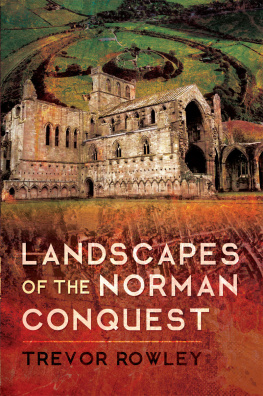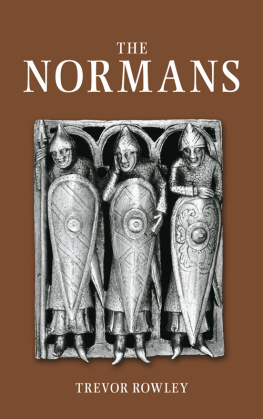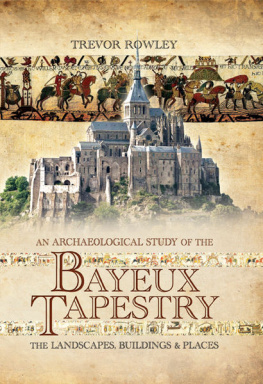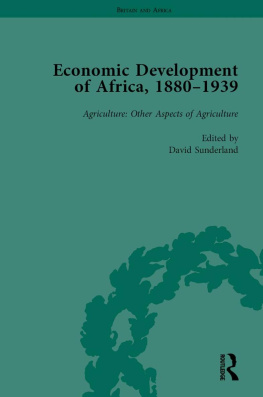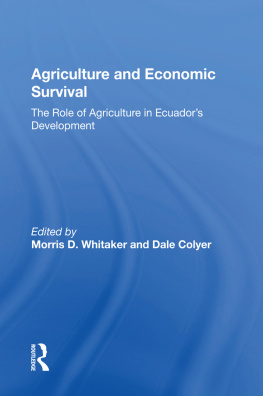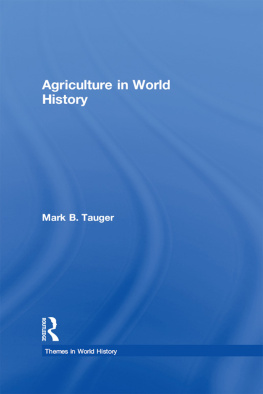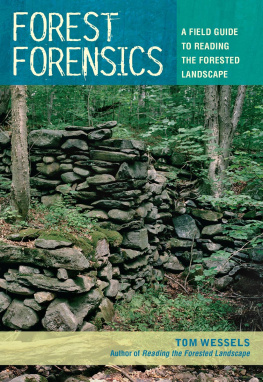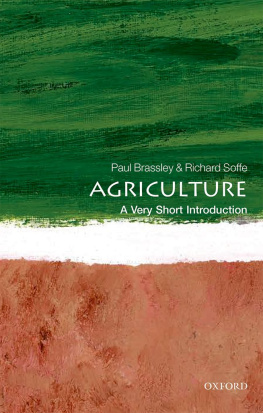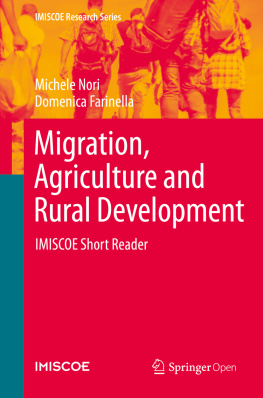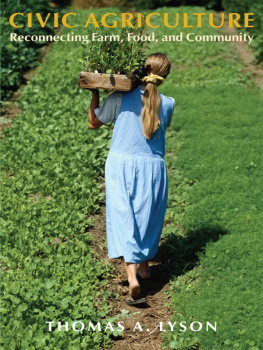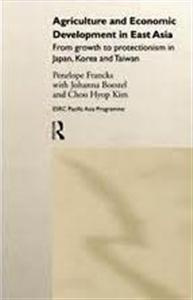ROUTLEDGE LIBRARY EDITIONS: THE MEDIEVALWORLD
Volume 45
THE ORIGINS OF OPEN FIELD AGRICULTURE
First published in 1981 by Croom Helm Ltd
This edition first published in 2020
by Routledge
2 Park Square, Milton Park, Abingdon, Oxon OX14 4RN
and by Routledge
52 Vanderbilt Avenue, New York, NY 10017
Routledge is an imprint of the Taylor & Francis Group, an informa business
1981 T. Rowley
All rights reserved. No part of this book may be reprinted or reproduced or utilised in any form or by any electronic, mechanical, or other means, now known or hereafter invented, including photocopying and recording, or in any information storage or retrieval system, without permission in writing from the publishers.
Trademark notice: Product or corporate names may be trademarks or registered trademarks, and are used only for identification and explanation without intent to infringe.
British Library Cataloguing in Publication Data
A catalogue record for this book is available from the British Library
ISBN: 978-0-367-22090-7 (Set)
ISBN: 978-0-429-27322-3 (Set) (ebk)
ISBN: 978-0-367-18035-5 (Volume 45) (hbk)
ISBN: 978-0-429-05923-0 (Volume 45) (ebk)
Publishers Note
The publisher has gone to great lengths to ensure the quality of this reprint but points out that some imperfections in the original copies may be apparent.
Disclaimer
The publisher has made every effort to trace copyright holders and would welcome correspondence from those they have been unable to trace.
1981 T. Rowley
Croom Helm Ltd, 2-10 St Johns Road, London SW11
British Library Cataloguing in Publication Data
The origins of open-field agriculture. (Croom Helm historical geography series)
1. Land tenure Great Britain History
2. Agricultural systems Great Britain History
I. Title II. Rowley, Trevor
333.2 HD594 8041574
ISBN 0-7099-01704
First published in the USA 1981 by
BARNES & NOBLE BOOKS
81 ADAMS DRIVE
TOTOWA, New Jersey, 07512
ISBN: 0-389-20102-2
Typesetting by Elephant Productions, London
Printed and bound in Great Britain by
Biddles Ltd, Guildford and Kings Lynn
The papers in this book were presented to a seminar on the Origins of Open-field Agriculture held at the Oxford University Department for External Studies in November 1978. They formed part of the programme to mark 100 years of adult education in Oxford University.
The aim of holding the seminar, at which the majority of these papers were presented, was to bring together scholars of different disciplines to explore their current attitudes to the origins and early development of open-field agriculture in England and Wales. It was decided from the outset to use the term open fields rather than medieval, strip or common fields as it seemed to be the most objective terminology. The others all carried with them certain implications about chronology, tenure or form. Despite their very different backgrounds, one thing all the contributors agreed about was that open fields varied enormously both in time and in space and that there were several regional forms of open fields.
Open-field agriculture has provided a fertile area for debate over the past century. In recent years questions about the way in which the open fields originated have become increasingly pertinent, as traditional ideas about their pagan-Saxon beginnings have been discarded. Scholars no longer accept that the change from prehistoric Celtic fields to strip cultivation took place in the post-Roman migration period. Moreover, it is now increasingly believed that this fundamental change in agricultural organisation may have been associated with the process of settlement nucleation in the later Anglo-Saxon period.
Taylor, who opened the proceedings, was pessimistic about the contribution archaeology could make to understanding the origins of the system. He pointed out that archaeological techniques would only be able to identify incidents of open-field farming when it was already well established and that much of our available field evidence in the form of earthworks was late or even post-medieval in date. However, Hall and Barker and Higham suggested ingenious ways in which a combination of judicious fieldwork and selective excavation may well produce evidence, if not of the origins of open-field systems then of open fields operating at an early date. Barker and Higham, whose paper is not included in this collection, discussed the excavated pre-Norman ridge and furrow found underneath the motte and bailey castle at Hen Domen, and the earthworks of apparently similar field systems found in areas adjacent to the castle.
The place-name historians, represented in this volume by Hooke, demonstrate ways in which careful analysis of place-name evidence can be used to help understand aspects of early field systems. Fox provides a detailed account of the Midland system, its variations and examples of field rearrangement.
A more recent conventional wisdom is questioned by Campbell who argues that far from reflecting an increasing population in the twelfth and thirteenth centuries the development of open-field farming was more likely to be the result of a declining population. He also suggests a more analytical approach to the problem.
The remainder of the papers in the volume incorporate a similar variety of views reflecting either regional forms of open-field system or conflicting suggestions about the way, the date or method in which they evolved. It is impossible to come to any conclusions which would be either chronologically or geographically valid. There was no consensus at the seminar. The nature of these papers does however indicate that the subject is a live one and one into which an enormous amount of fruitful research is currently taking place. It is hoped that the papers in this volume will provide a stimulus to scholars from all the disciplines that are involved in the exploration of the origins of open-field agriculture.
Thanks are due to Shirley Hermon, Lucienne Walker and Linda Rowley for helping with the production of the typescript and BKS Surveys for permission to produce . I would also like to thank contributors for their work in producing the papers.
Trevor Rowley
C.C. Taylor
Numerous scholars have attempted to describe, define and explain the general system of agriculture practised over much of Britain, and indeed on the continent, throughout most of the medieval period and later. However, in spite of all the effort put into the study there still seems little agreement on what constituted open-field agriculture and how and when it developed. At its simplest, open-field agriculture was the means by which land was cultivated by the inhabitants of a township who worked their holdings in unenclosed parcels.
This definition hardly explains the true complexity or variety of the system as it is revealed through medieval and post-medieval documentation. For the definition not only embraces the highly developed Midland, or regular, common field system as first defined by Gray as well as the numerous other variants described in detail by Dr Campbell (see below pp. 112-29), but also covers other related systems such as runrig and infield and outfield, which are well documented as having existed in many places in this country. All these variants can be, and indeed have been, defined to a greater or lesser extent, but from the archaeological point of view it is important to note the main characteristics which separate one type from another. Dr Thirsk defined the classic Midland common field system as being made up of four essentiale lements (Thirsk, 1966). First, arable and meadow were divided into strips among the cultivators. Secondly, both arable and meadow were thrown open for common pasturing at certain times. Thirdly, there were common rights over waste and lastly the ordering of these activities was regulated by some form of assembly of the people involved. On the other hand the other more irregular common field systems are differentiated by such features as whether cropping or pasturing is undertaken in common or whether regulation is by individuals or groups. All these and many other factors such as crop rotations, tenurial arrangements and inheritance laws have been used to explain the many different forms that open-field agriculture is known to have taken. In the final analysis, an assessment of the relative importance of the different factors which go to make up the various types of open-field systems might go some way towards explaining the origins of such systems.


